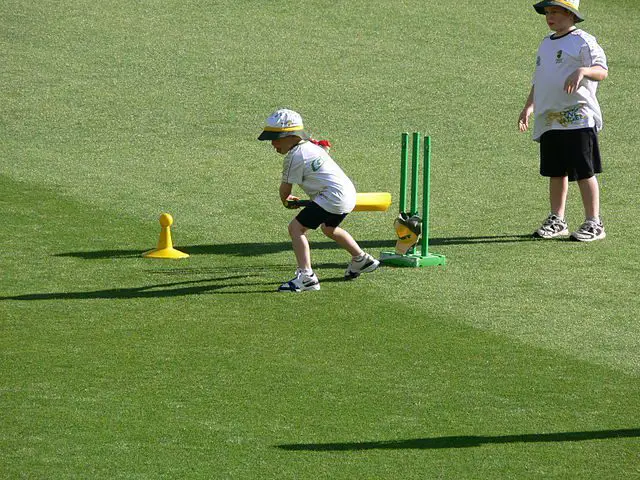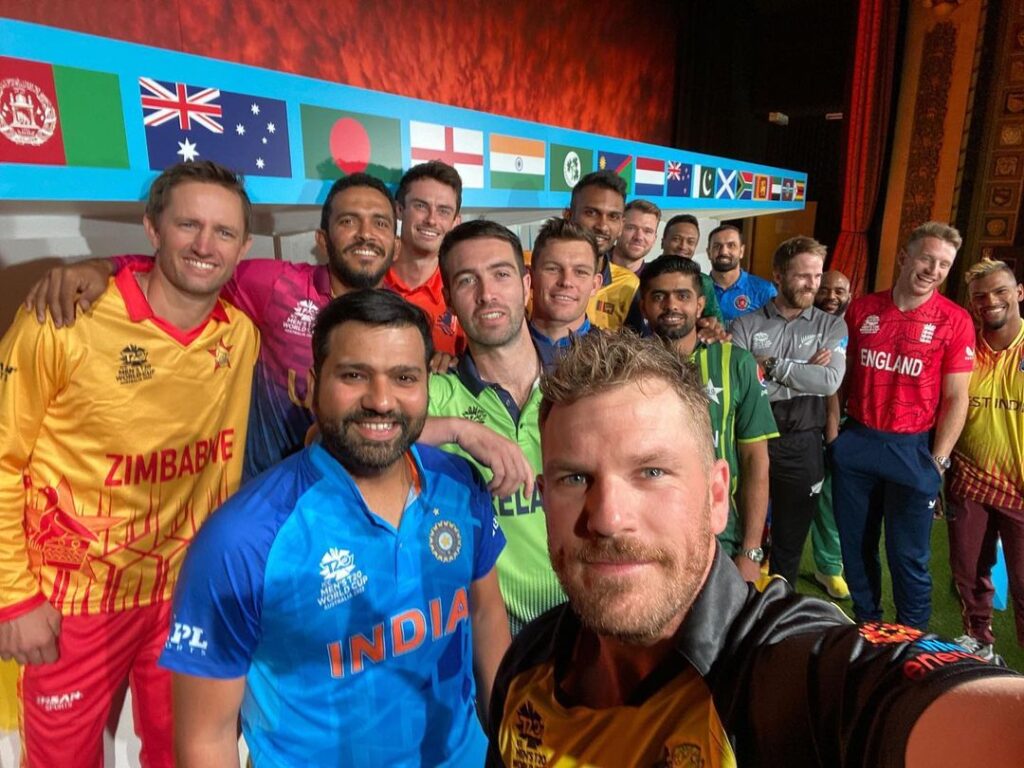Table of Contents
As a young player looking to learn the game of cricket, there are a number of starting points. Kwik Cricket is a fast and fun activity in its own right, but it can also provide a pathway into the full sport.
What is Kwik Cricket?
Kwik Cricket is a fast paced game with a focus on enjoyment and inclusion. It is largely aimed at young players and it loosely follows the laws of cricket itself.
Plastic bats, balls and stumps are used with smaller teams and a quick rotation of play.

How to Play Kwik Cricket?
Kwik Cricket Rules
The rules can be fluid between Kwik Cricket organisations, but they will all tend to follow a similar pattern. While the England and Wales Cricket Board (ECB) actually publish a set of guidelines, these can be adapted depending on how many people are available, and whether there is a mixed ability set up.
Essentially, this is how Kwik Cricket works.
Teams
The number of players in a team can be allowed to vary, depending on how many are available. An ideal number will see eight players taking part on each side, but there can be as few as four per team.
The Game
Before the game, the playing area is marked out with a series of plastic cones for the boundary and stumps for the wickets.
It’s recommended that the stumps are placed 15 yards apart for Under 9’s players. For the under 11s age group, this can be increased to 17 yards.
The boundary is circular and this should be at a maximum of 30 metres for Under 9’s and 35 metres for Under 11s.
Batting
It’s now time for the game to begin. The batting side starts with a total of 200 runs. They can add to that total by scoring additional runs, as they would in any form of cricket match.
So, if the ball is hit over the boundary without bouncing, six runs are added to the team total. Four runs will be scored if the ball bounces before reaching the boundary.
The two batters can also run between the wickets in the usual way, to add runs to their total.
There is a standing umpire and if they decide that a wide or a no ball has been bowled, an extra two runs will be added to the batting team. An extra ball will not, however, be added, unless the innings has reached its final over.
The batter can be dismissed in five different ways: Bowled, Caught, Stumped, Run out or Hit Wicket. There is no option for LBW, but the batter must not deliberately block the ball or kick it away.
If a batter is dismissed, five runs are deducted from the team total. However, instead of that batter leaving the field, they will merely switch ends with their partner.
Prior to the game, the two captains will agree on the amount of overs to be bowled. Let’s say that there will be 20 overs a side, and that there are ten players on each team.
Batters will be split into pairs and, in this situation, those pairs will bat for four overs each. At the end of that four-over sequence, the new set of batters come in.
Bowling and Fielding
The aim of Kwik Cricket is to be inclusive and to involve everyone in the game. That’s why most matches will see all players have a bat and a bowl. In our scenario of a 20-overs a side game with ten participants on each team, this would mean that all players would be expected to bowl two overs each.
This would include the wicket keeper and, in many games, this particular role can also be shared around the team. All players would rotate positions at the end of each over, although this could be optional in the case of the keeper.
Except for that wicket keeper, no fielders would be allowed to stand within ten metres of the bat.
At the end of the match, the team with the highest total will win the game. Because of the possibility of a team losing runs when a wicket falls, the match can continue even when the side batting second has passed their opponents’ total.
Overall, it’s a full game with all players having a chance to get involved.
Kwik Cricket Equipment
A typical game of Kwik Cricket will require
- 2 bats
- 1 ball
- 2 sets of stumps
- 20 cones
- 1 scoresheet
- 1 helmet for the wicket keeper
All items are made from plastic for safety reasons. Each item of equipment plays the identical role to the one that we see in the full version of cricket. I.E. The bat hits the ball with the aim of scoring runs.

Kwik Cricket Glossary
- Aim: As the ECB guide to Kwik Cricket states, the aim is to provide ‘enjoyment, fun and fair play for all players’.
- Pitch: There will be two sets of wickets. The yardage between the stumps will depend on the age group.
- Boundary: A series of plastic cones will mark the boundary. These will be placed up to 35 metres away from the wickets, depending on the age group.
- Teams: Even teams with up to ten players per side will be allowed.
- Batting: Teams will decide on the amount of overs to be bowled. Batsmen score runs as they would in any form of cricket. Teams start with a score of 200 runs and they look to add to that total. Five runs will be deducted with every loss of a wicket.
- Bowling: Players in the bowling team will deliver up to two overs each.
- Fielding: With the exception of the wicket keeper, players must not field within ten metres of the batter. At the end of each over, the fielders will move along one position.
- Winners: At the end of the allotted set of overs, the team with the highest score wins the game.
Short Kwik Cricket History
The history of Kwik Cricket can be traced back to 1988. That was the point when a game was played during the lunch break, in the test match between England and the West Indies at Old Trafford.
The match in question was given an impressive seal of approval as the West Indian fast bowler Courtney Walsh delivered the first ball. At that point, wooden bats and stumps were used and the rules of the game were very ‘loose’.
The game of Kwik Cricket was originally devised by two PE teachers from Walsall and Childer Thornton Primary School in Cheshire. Gareth and Eryl Powell are brothers and they looked to devise a version of the game that would encourage more youngsters in schools to play.
Following that early game in 1988, the ECB began to formalise the rules of Kwik Cricket and it’s now widely played across the UK and beyond.
Final Thoughts
Kwik Cricket wasn’t around when I started playing cricket and that’s a shame. Having watched youngsters play it on the outfields of various cricket grounds over the years, I can see that it’s a lot of fun.
That fun element is seriously important. Cricket can be a difficult game at times when you’re not batting or bowling. We come to expect that as adults but, as a young player, you want to be more involved, or you will head off and find something else to play.
Kwik Cricket’s rules allow for that ongoing involvement and I’m certain it’s been instrumental in getting more young players interested in the game.


